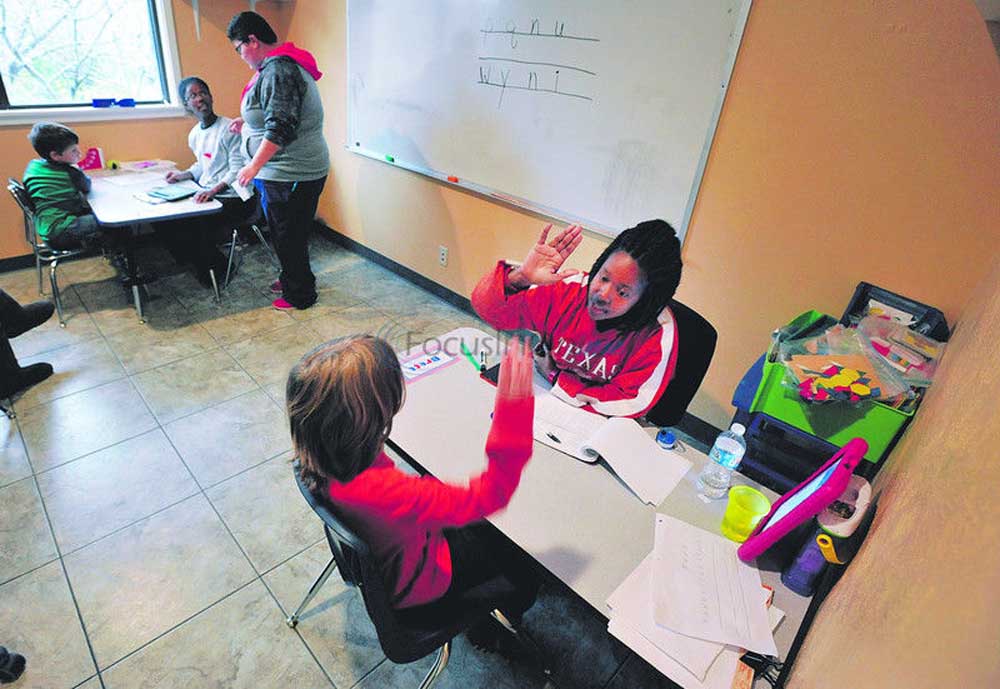TLC for Children with Autism
Published 7:39 pm Sunday, January 3, 2016

- Students and classroom trainers work one-on-one in one of the classrooms Monday, Dec. 28, 2015, at the Treatment and Learning Center in Tyler. The center offers individualized treatment designed to teach fundamental life skills to children aged 18 months to 21 years diagnosed with Autism Spectrum Disorder. Andrew D. Brosig/Tyler Morning Telegraph
The boy was already kindergarten-aged, but the autism he was born with simply made it too difficult for his parents to even toilet-train him on their own. At their wits end, they took him to the Treatment and Learning Center for Children with Autism (TLC) in Tyler, where Team Leader Laura Shulenberger and the rest of the staff were able to teach him in a few weeks. This young boy has now finished the entire curriculum, and will graduate from the TLC in a few weeks.
“Working here is almost a selfish experience,” Ms. Shulenberger said. “It’s more rewarding for me than for them almost, sometimes. They’ll have to pry me out of this place before I leave.”
She says it’s these stories of successfully helping a child that motivate her and the rest of the TLC, and that one can hear celebrations of these sorts of victories up and down the hallway of classrooms on a daily basis.
BEGINNING
The TLC started in 2009 as a branch of the Andrews Center, and is the only full-time treatment center in East Texas. It accepts clients from the age of 18 months to 21 years into their program, which is built around Applied Behavior Analysis.
The goal of ABA, Ms. Shulenberger said, is to “help a child move to the least restrictive environment.”
They accomplish this through a two-step process: The first is Direct Trial Training, with every child being assigned their own personal therapist, who uses high-repetition means to teach children basic social and linguistic skills. The second is Natural Environment Training, which focuses on generalizing these skills and helping the child transition into a more regular group setting.
One key to success in this process, she said, is the intensive training the therapists receive, as they prepare for months onsite before working with children.
HOW IT WORKS
Ms. Shulenberger said that in her experience, most children are diagnosed at 2 years old, and are usually brought in at about four. The process for accepting a child to the TLC begins with giving the parents a tour of the facility and explaining the general nature of ABA therapy. They then verify the family’s insurance, to make sure it covers the therapy. However, though ABA therapy is usually cost-prohibitive for families paying out of pocket, they employ a broker to work with families and insurance companies to direct them to a policy that will meet their needs, while trying to minimize the expensive deductibles. If this proves insufficient, they will direct families to other places in East Texas that offer part-time ABA therapy.
“We want to be a community resource,” Ms. Shulenberger said. “We’re still figuring out how to best work everything.”
The next step is to schedule a meeting where they can assess a child’s state, and discuss possible goals with the family. Before the learning begins, though, there is a pairing process, often of a few weeks, where the therapists build relationships with the children, simply earning their trust before placing any demands on them.
Children typically enter the Early Learner program first, which is a group setting designed to supplement the one-on-one therapy in an environment similar to pre-kindergarten. The children learn songs and some of the usual things children their age do, as well as skills that do not come as naturally to them, such as group play and language skills – “teaching children why to talk as much as how,” according to Ms. Shulenberger. The program also specializes in toilet training, which often does not come easily for children on the autism spectrum.
The next stage focuses on training children to enter a more regular school environment. Skills taught involve using their imaginations more in play, sitting at tables longer, paying attention to a teacher, and earning the breaks they take. These older children are also taught team sports, such as basketball and baseball, to ease their transition to school.
The final stage, or the Bridge as they call it, focuses on transferring the children from the one-on-one relationship with their therapist/teacher to an environment much like the classroom, with a teacher at the front, and therapists only present for behavioral help. This continues into the classrooms of the regular school districts, where the therapist may shadow the child so as to help them be more comfortable in their passage.
OPEN DOOR
The TLC also has an open door policy, and welcomes parents to visit their children at any time they like. The size, make-up, and ages of the student body vary greatly each year, with the staff adjusting accordingly. Right now, there are 10 children and 13 therapists, as well as the leadership team.
“Feedback, training, and learning are part of the day-to-day here,” Ms. Shulenberger said. “You never stop. We’re really passionate about what we do.”
She says one of their other main goals is to develop a strong community with and between families, to relieve some of the isolation that can follow a child’s diagnosis with autism.
The TLC is located at 1722 W. Front St. in Tyler. To schedule an appointment, contact lshulenber@andrewscenter.org , or call 903-593-4004.
For more information, visit www.tlcaba.org.






